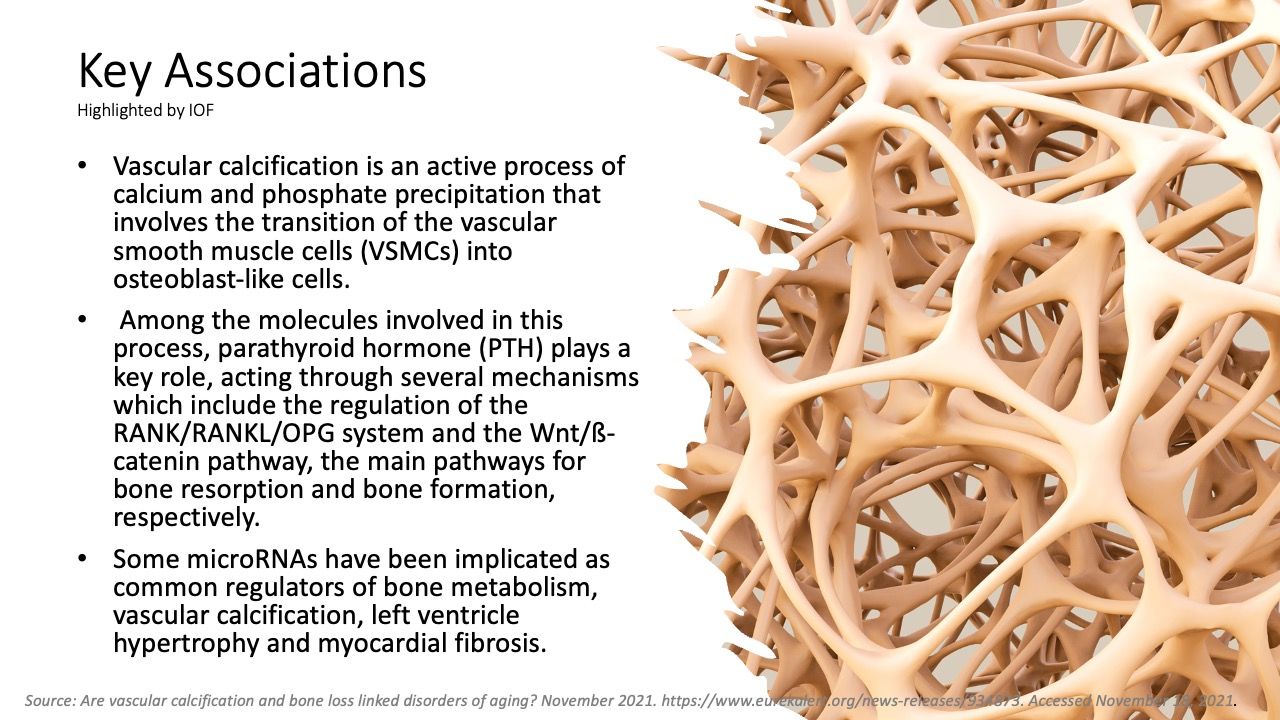Article
International Osteoporosis Foundation Issues Review of Links Between Bone Loss and Vascular Calcification
The latest review from the International Osteoporosis Foundation is a 14-page document with more than 100 references outlining current data related to the pathophysiological links between vascular calcification and bone loss.
The International Osteoporosis Foundation (IOF) Working Group on Bone and Cardiovascular Diseases has issued a new review detailing information related to a possible link between vascular calcification, low bone mass, and fragility fracture.
A 14-page document composed by a half dozen leading experts, the review provides an overview of multiple pathophysiological mechanisms shared by vascular calcification and bone loss and provides clinicians with markers of bone and cardiovascular disease to aid in risk stratification of patients in real-world settings.
“This review consolidates current knowledge on how the pathogenesis and progression of vascular calcification and bone loss share several factors and pathways. This question remains: what comes first - is bone loss driving the vascular calcification or the opposite? Or, is there a higher level of dysregulation through aging processes that impacts on both tissues simultaneously but through similar mechanisms?,” said Professor Jorge B. Cannata-Andia, lead author and Co-chair of the IOF Working Group on Bone and Cardiovascular Diseases, in a statement.
Containing 109 references, the document writing group was representative of multiple countries in South America and Europe. The bulk of the document, which was broken down into 5 sections, was dedicated to outlining the role of key regulators in osteoporosis and vascular calcification, including parathyroid hormone and FGF23, the role of phosphorous, the RANK/RANKL/OPG system, the Wnt/ß-Catenin pathway, the role of microRNAs in bone and vascular metabolisms, and cellular senescence.

In their conclusion, investigators noted PTH, the RANK/RANKL/OPG system and the Wnt/ß-catenin pathway were the most extensively studied factors related to vascular calcification and bone loss detailed within the review. Investigators pointed out it is difficult, based on current evidence, to establish cause and effect as to whether bone loss is driving vascular calcification or vice-versa. Investigators also noted the possibility of higher levels of dysregulation as a result of the aging process that could impact both tissues simultaneously.
“Better understanding of the shared mechanisms between aging, vascular calcification, and bone loss may ultimately help us to better understand the potential effects of osteoporosis drugs on the cardiovascular system,” added Professor Serge Ferrari, Co-chair of the IOF Working Group and Vice-Chair of the IOF Committee of Scientific Advisors, in a statement. “We hope that this review serves to clarify and summarize current knowledge on the pathophysiology of these common mechanisms, as a steppingstone to further research.”
This review, “Pathophysiology of Vascular Calcification and Bone Loss: Linked Disorders of Ageing?,” was published in Nutrients.





